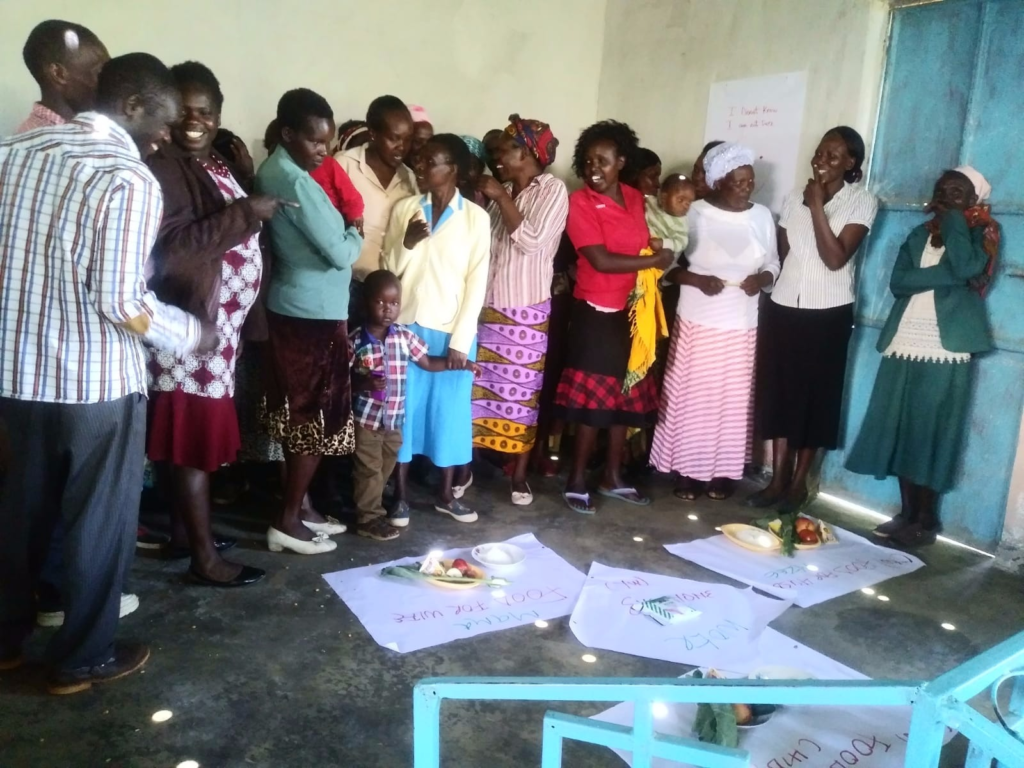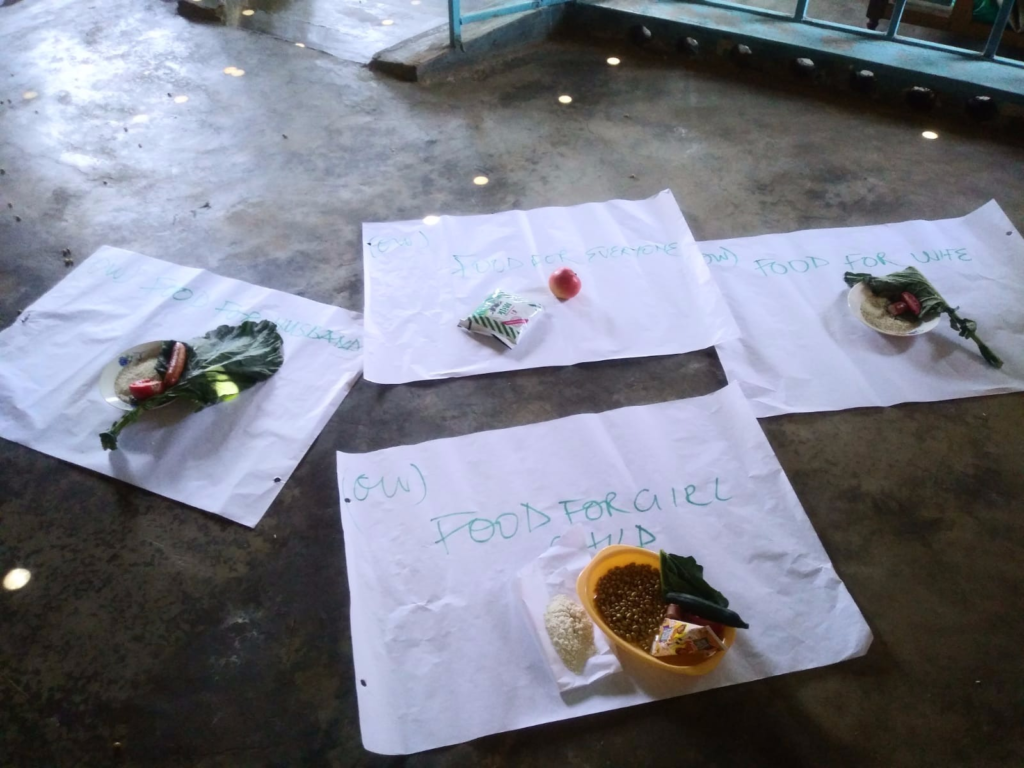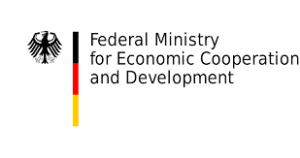by Eileen Bogweh Nchanji, Scholastica Wambua, and Jacinta Simba
Empowering a woman is empowering a nation, but empowering a family is empowering the world
Rural women play a central role in food, income and nutrition security for their households through agriculture. Consequently, men are considered household heads and breadwinners for the family; they buy food for the household, hence determine the type of food consumed in homes. Although women provide a significant amount of the labour required for agricultural production, they are often locked out in the control over the income that their labour generates, reducing their contribution towards household food provision and nutritional intake.
It is within this backdrop that a gender-responsive nutrition exercise was carried out under the BMZ funded project; Making Value Chains work for Food and Nutrition Security in East Africa. The project implemented in Kenya and Uganda aims to improve the diets of vulnerable rural-urban consumers in the base of the pyramid (BoP); by educating men and boys on the values of purchasing and consuming nutritious and healthy foods. Through this project, producer of beans and amaranth are linked with processors to sell off their produce thereby generating income and creating partnerships that sustain their businesses.
The training kicked off with a reflection on the meaning of gender to the individual and the family. Various definitions were voiced with some participants agreeing that gender is not about women, but includes all members in the household; the man, woman, youths and children. Participants agreed that men and women have different household responsibilities and roles. When asked who cooks and who buys food in the home, Women agreed that they do the cooking and men responded that they bought food for the household?
Two volunteers; a youth and an elderly lady, were requested to serve some food, for them, their husbands, and the children as they do at home. From the exercise, it was evident that men are served more energy and bodybuilding foods, even though both women and men agree that women use more energy in their daily activities than men. The next question was why the men in the house were served the best of foods compared to the women and children. The women shared that they were taught that way by the mothers when they were young. This is a result of the effect of social norms on food and nutrition intake in households.
The participants were cautioned that the role play exercise was not to challenge the existing cultural norms but to educate them on what was food is nutritious to their bodies. After the exercise, participants will decide whether culture supports a healthier lifestyle and explore ways to make it better. The nutrition team explained the different food groups to the participants; providing details of food requirements and who should eat what food.
The nutrition team further explained the benefits of the right quantity and quality of food for different members of the household. Examples of foods suitable for children under two years and those needed by pregnant mothers. Food preparation and safety is key in nutrition in order to ensure the nutritive value of food is preserved.
“I love eating cake and juice, are these foods good for my health? asked one of the participants. The nutritionist explained that sweetest drinks and the content in there have adverse effects on our health when consumed frequently and in large quantities. Participants were encouraged to eat fresh fruits instead of consuming sweetened drinks like sodas.
After the training, participants were asked what lessons stood out throughout the whole exercise, they were eager to share the lessons. One gentleman stood and said, “ I will start buying good food at home so that my children eat good food.”
What was clear for the participants is the importance of eating a balanced diet from locally available foods being mindful of the social categories of people in the household, eating nutritious foods, and helping out in the home.
Read more about the project:
Making value chains work for food and nutrition security of vulnerable populations in East Africa
Low-income communities need more affordable and nutritious food
Making Value Chains Work for Food and Nutrition Security of Vulnerable Populations in East Africa” is supported by:
The CGIAR Research Program on Agriculture for Nutrition and Health (A4NH) has provided co-funding. It is a joint project between DAPA-Sustainable Food Systems and the Pan-Africa Bean Research Alliance (PABRA) under CIAT. The project is led by the International Center for Tropical Agriculture (CIAT), in collaboration with Kenya Agriculture and Livestock Research Organization (KALRO), Ugandan National Agricultural Research Organization (NARO), The University of Hohenheim (UHOH), and University of Göttingen (UGOE).





